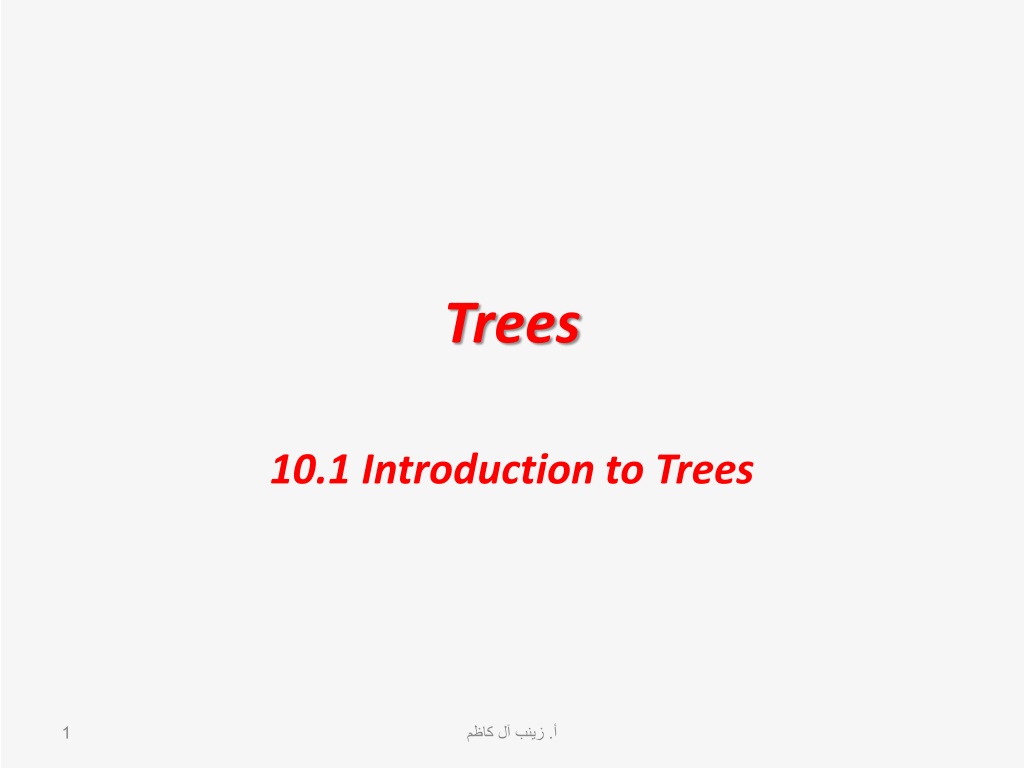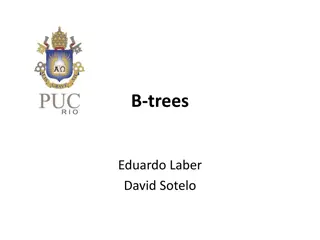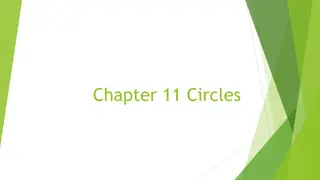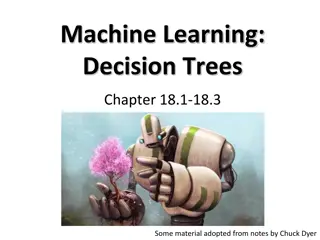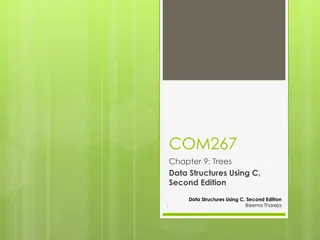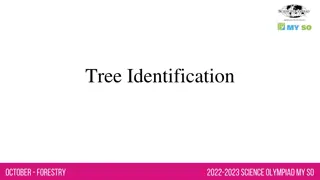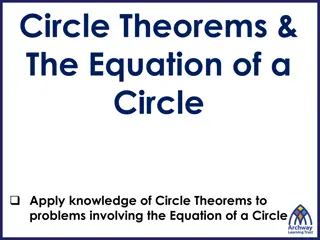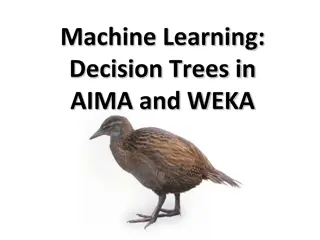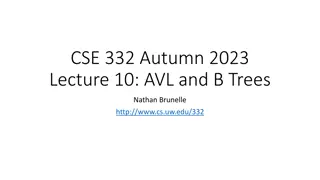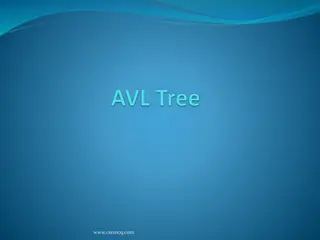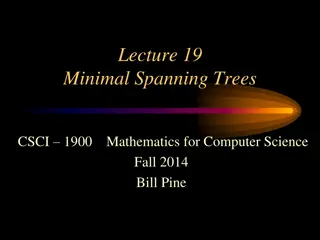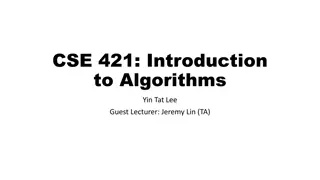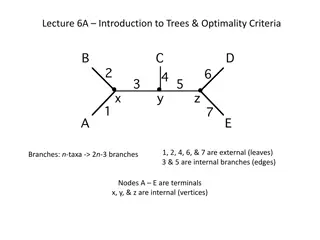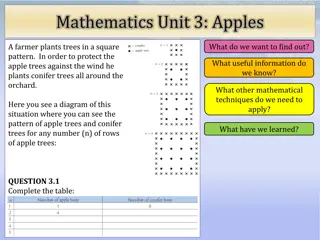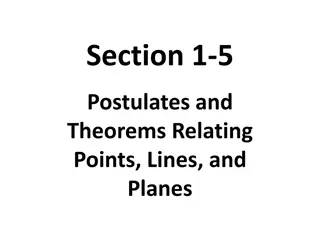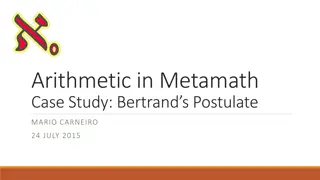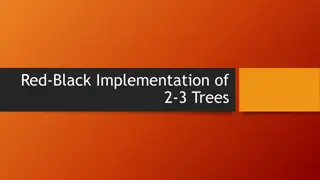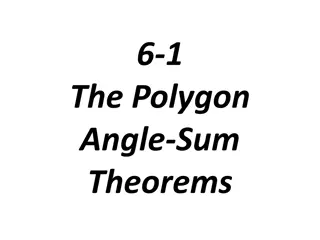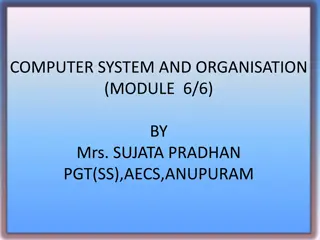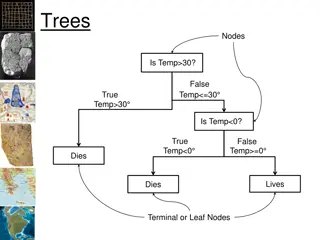Introduction to Trees: Definition, Examples, and Theorems
A tree in graph theory is a connected, undirected graph with no simple circuits. This content explains tree definitions, examples, forests, theorems, rooted trees, and related concepts. You'll learn about identifying trees, forests, rooted trees, and more.
Download Presentation

Please find below an Image/Link to download the presentation.
The content on the website is provided AS IS for your information and personal use only. It may not be sold, licensed, or shared on other websites without obtaining consent from the author. Download presentation by click this link. If you encounter any issues during the download, it is possible that the publisher has removed the file from their server.
E N D
Presentation Transcript
Trees 10.1 Introduction to Trees 1 .
Introduction to Trees DEFINITION 1 A tree is a connected undirected graph with no simple circuits. Because a tree cannot have a simple circuit, a tree cannot contain multiple edges or loops. Therefore any tree must be a simple graph. 2 .
EXAMPLE 1 Which of the graphs shown in Figure 2 are trees? Solution: G1and G2are trees, because both are connected graphs with no simple circuits. G3is not a tree because e, b, a, d, e is a simple circuit in this graph. Finally, G4is not a tree because it is not connected. 3 .
Forests Any connected graph that contains no simple circuits is a tree. What about graphs containing no simple circuits that are not necessarily connected? These graphs are called forests and have the property that each of their connected components is a tree. 4 .
THEOREM 1 An undirected graph is a tree if and only if there is a unique simple path between any two of its vertices. 5 .
The Root & Rooted Trees In many applications of trees, a particular vertex of a tree is designated as the root. Because there is a unique path from the root to each vertex of the graph (by Theorem1), we direct each edge away from the root. Thus, a tree together with its root produces a directed graph called a rooted tree. 6 .
Rooted Tree DEFINITION 2 A rooted tree is a tree in which one vertex has been designated as the root and every edge is directed away from the root. 7 .
Some Concepts Suppose that T is a rooted tree. If v is a vertex in T other than the root, the parent of v is the unique vertex u such that there is a directed edge from u to v. When u is the parent of v, v is called a child of u . Vertices with the same parent are called siblings. The ancestors of a vertex other than the root are the vertices in the path from the root to this vertex, excluding the vertex itself and including the root (that is, its parent, its parent's parent, and so on, until the root is reached). The descendants of a vertex v are those vertices that have v as an ancestor. A vertex of a tree is called a leaf if it has no children. .Vertices that have children are called internal vertices. The root is an internal vertex unless it is the only vertex in the graph, in which case it is a leaf. If a is a vertex in a tree, the subtree with a as its root is the subgraph of the tree consisting of a and its descendants and all edges incident to these descendants. 8 .
9 .
10 .
11 .
12 .
EXAMPLE 2 In the rooted tree T (with root a) shown in Figure 5, find the parent of c, the children of g, the siblings of h , all ancestors of e, all descendants of b, all internal vertices, and all leaves. What is the subtree rooted at g? Solution: the parent of c: b the children of g: h , i , and j the siblings of h: i and j . ancestors of e: c , b , and a . all descendants of b: c , d , and e . all internal vertices: a, b, c, g, h , and j . all leaves: d, e, f, i , k, I, and m . subtree rooted at g: 13 .
m-ary & full m-ary DEFINITION 3 A rooted tree is called an m -ary tree if every internal vertex has no more than m children. The tree is called a full m-ary tree if every internal vertex has exactly m children. An m ary tree with m = 2 is called a binary tree. 14 .
EXAMPLE 3 Are the rooted trees in Figure 7 full m -ary trees for some positive integer m ? Solution: T1is a full binary tree because each of its internal vertices has two children. T2is a full 3-ary tree because each of its internal vertices has three children. In T3each internal vertex has five children, so T3is a full 5-ary tree. T4 is not a full m -ary tree for any m because some of its internal vertices have two children and others have three children. 15 .
Some Concepts An ordered rooted tree is a rooted tree where the children of each internal vertex are ordered. Ordered rooted trees are drawn so that the children of each internal vertex are shown in order from left to right. In an ordered binary tree (usually called just a binary tree), if an internal vertex has two children, the first child is called the left child and the second child is called the right child. The tree rooted at the left child of a vertex is called the left subtree of this vertex, and the tree rooted at the right child of a vertex is called the right subtree of the vertex. 16 .
EXAMPLE 4 What are the left and right children of d in the binary tree T shown in Figure 8(a) (where the order is that implied by the drawing)? What are the left and right subtrees of c? Solution: The left child of d is f and the right child is g. We show the left and right subtrees of c in Figures 8(b) and 8( c), respectively. 17 .
Properties of Trees THEOREM 2 A tree with n vertices has n - 1 edges. THEOREM 3 A full m-ary tree with i internal vertices contains n=m.i+1 vertices. 18 .
Homework Page 693 1 (a,c) 3 (a,b,c,d,e,f,g,h) 5 17 18 19 .
